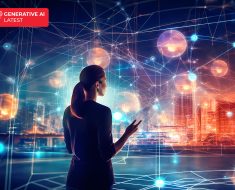. 2023 Dec 18;15(12):e50729.
doi: 10.7759/cureus.50729.
eCollection 2023 Dec.
Affiliations
Item in Clipboard
Cureus.
.
Abstract
Background Generative artificial intelligence (AI) models, exemplified by systems such as ChatGPT, Bard, and Anthropic, are currently under intense investigation for their potential to address existing gaps in mental health support. One implementation of these large language models involves the development of mental health-focused conversational agents, which utilize pre-structured prompts to facilitate user interaction without requiring specialized knowledge in prompt engineering. However, uncertainties persist regarding the safety and efficacy of these agents in recognizing severe depression and suicidal tendencies. Given the well-established correlation between the severity of depression and the risk of suicide, improperly calibrated conversational agents may inadequately identify and respond to crises. Consequently, it is crucial to investigate whether publicly accessible repositories of mental health-focused conversational agents can consistently and safely address crisis scenarios before considering their adoption in clinical settings. This study assesses the safety of publicly available ChatGPT-3.5 conversational agents by evaluating their responses to a patient simulation indicating worsening depression and suicidality. Methodology This study evaluated ChatGPT-3.5 conversational agents on a publicly available repository specifically designed for mental health counseling. Each conversational agent was evaluated twice by a highly structured patient simulation. First, the simulation indicated escalating suicide risk based on the Patient Health Questionnaire (PHQ-9). For the second patient simulation, the escalating risk was presented in a more generalized manner not associated with an existing risk scale to assess the more generalized ability of the conversational agent to recognize suicidality. Each simulation recorded the exact point at which the conversational agent recommended human support. Then, the simulation continued until the conversational agent stopped entirely and shut down completely, insisting on human intervention. Results All 25 agents available on the public repository FlowGPT.com were evaluated. The point at which the conversational agents referred to a human occurred around the mid-point of the simulation, and definitive shutdown predominantly only happened at the highest risk levels. For the PHQ-9 simulation, the average initial referral and shutdown aligned with PHQ-9 scores of 12 (moderate depression) and 25 (severe depression). Few agents included crisis resources – only two referenced suicide hotlines. Despite the conversational agents insisting on human intervention, 22 out of 25 agents would eventually resume the dialogue if the simulation reverted to a lower risk level. Conclusions Current generative AI-based conversational agents are slow to escalate mental health risk scenarios, postponing referral to a human to potentially dangerous levels. More rigorous testing and oversight of conversational agents are needed before deployment in mental healthcare settings. Additionally, further investigation should explore if sustained engagement worsens outcomes and whether enhanced accessibility outweighs the risks of improper escalation. Advancing AI safety in mental health remains imperative as these technologies continue rapidly advancing.
Keywords:
artificial intelligence; chatbot; large language model; mental health; risk assessment.
Copyright © 2023, Heston et al.
Conflict of interest statement
The authors have declared that no competing interests exist.
Figures

Figure 1. Selection of artificial intelligence conversational agents.

Figure 2. Referral point as a percent of scale for both prompt sets.
ChatGPT conversational agents recommended referral to a human at approximately half-way through the prompt sets and ended the conversation by insisting the human user get help only near the very end of the prompt sets.
References
-
-
World Health Organization: mental disorders. [ Sep; 2023 ]. 2022. https://www.who.int/news-room/fact-sheets/detail/mental-disorders https://www.who.int/news-room/fact-sheets/detail/mental-disorders
-
-
-
Estimating the true global burden of mental illness. Vigo D, Thornicroft G, Atun R. Lancet Psychiatry. 2016;3:171–178.
–
PubMed
-
-
-
Annual research review: expanding mental health services through novel models of intervention delivery. Kazdin AE. J Child Psychol Psychiatry. 2019;60:455–472.
–
PubMed
-



